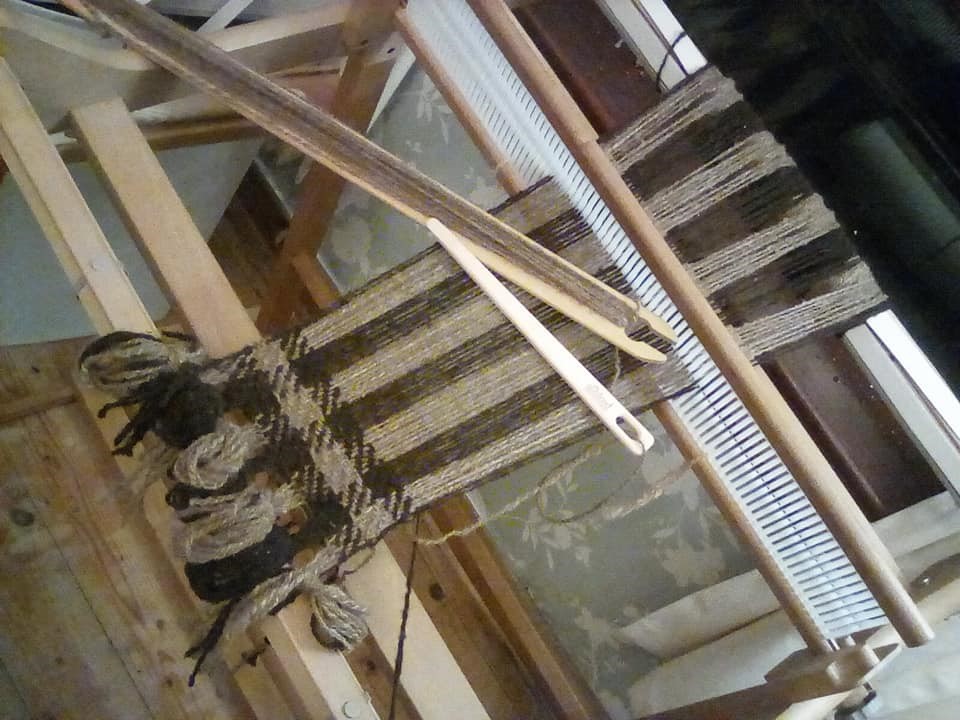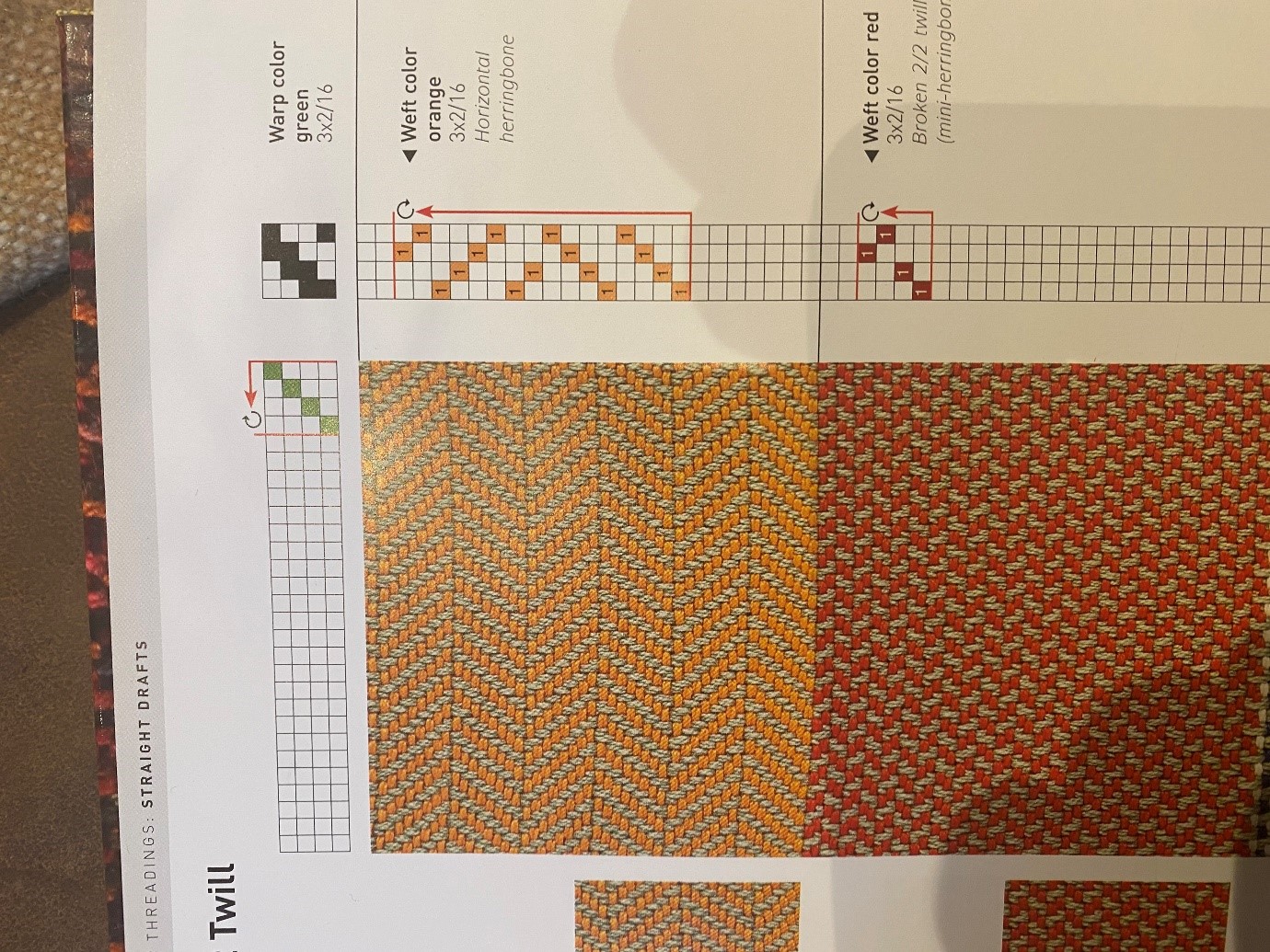In 1933, workmen, whilst digging the foundations for the Callendar Riggs Bus Station, uncovered a jar containing Roman coins. The jar was sealed with a fragment of fabric, which was said to be the earliest known form of tartan. The post to the right of the photo below roughly marks the place where it was found. Hoard and Tartan are now kept at the National Museum of Scotland, Chambers St, Edinburgh (NS 8922 7992). A dating test revealed that the jar was buried after the Romans left the UK and that the woven fabric had been made from the natural, undyed wool of Soay sheep.




The Soay
The tale of the tartan starts with a small, long-tailed, ancient Celtic breed of sheep, the Soay. This is considered a rare breed nowadays but dates back to the Bronze Age, unimproved by human-devised breeding programmes. Soay sheep range in colour from cream to chocolate brown. Nowadays, there is a flock of Soay roaming virtually wild on Hirta, an outer island of the St. Kilda group.
My aim here is to reproduce the Falkirk Tartan. I am going to use two contrasting colours of wool from Soay fleece, hand spin it myself, then weave it into an interpretation of the original pattern (see pattern below). I hope to come up with a scarf in the Falkirk Tartan that can be put on exhibition to the public. For this project, I purchased an entire dark brown Soay fleece from a farm in Wales, weighing about 300g. As far as can be ascertained, the Falkirk Tartan was woven from just two contrasting natural colours of Soay fibre –I therefore also obtained a batch of lighter coloured Soay fleece, also weighing 300g, which had been commercially pre-prepared for spinning.




Preparing the Wool
Before I can weave the yarn, I have to wash the fleece. I use a commercially produced liquid for handwashing woollens that requires no rinsing. I use an old baby bath to totally immerse the whole fleece in cool water, with a teaspoonful of said washing liquid. The fleece is soaked for 24 hours, ensuring that all bacteria or potential wildlife ceases to inhabit the fibre. I then remove the fleece from the water, squeezing it gently, and leave it to drip on a clothes airer till it’s dry.
You’ll see the next stages of preparing the fleece (combing or “carding,” spinning, and threading the loom) in this video, filmed at Callendar House. There’s glossary explaining terms like “carding” at the end of this story. In the video, I sing an old traditional Scottish folk song, "The Wee Cooper o' Fife":




How to Weave the Falkirk Tartan
Now I have threaded up my loom to weave the scarf. The vertical threads are called the “warp,” so the technical term for what I have done is “warping the loom.” The horizontal threads are called the “weft” and they are woven over and under the warp threads into the chevron pattern.
Mairi Breslin describes the process:
"Warp stripes of light and dark yarn, 8 light, 8 dark, 8 light etcetera, for as many ends as you can get in the reed. Then weave 8 picks light, 8 picks dark all the way up. You should weave a simple 2/2 twill in a herringbone pattern. Number each thread in the warp stripes 1-8 (probably just in your head but a wee drawing might help). Then weave as follows:
Pick 1. Over threads 1&2, under threads 3&4, over threads 5&6, under threads 7&8.
Pick 2. Under thread 1, over threads 2&3, under threads 4&5, over thread 6&7, under thread 8.
Pick 3. Under thread 1&2, over threads 3&4, under threads 5&6, over threads 7&7, under thread 8.
Pick 4. Over thread 1, under threads 2&3, over threads 4&5, under threads 6&7, over thread 8.
Repeat
When you have done all 8 picks in one colour, change to the next and reverse the pattern, so:
Pick 1. Under threads 1&2, over threads 3&4, under threads 5&6, over threads 7&8.
Pick 2. Over thread 1, under threads 2&3, over threads 4&5, under thread 6&7, over thread 8.
Pick 3. Over thread 1&2, under threads 3&4, over threads 5&6, under threads 7&7, over thread 8.
Pick 4. Under thread 1, over threads 2&3, under threads 4&5, over threads 6&7, under thread 8."
"You’ll get diagonal lines which will change direction in each stripe. Sometimes, you will miss a warp thread or two at the edges. Don’t worry about this – it’s just how twills go. You can see a proper weaving draft for this pattern in the photo below. Because you are weaving this Falkirk tartan with stripes in the warp and the weft it will look more like the one below, but it will reverse the same way as the one above. Good luck!"
You can see me wearing the final product below.










Here I sing the Irish spinning song:
Glossary
Carding – The purpose of carding (or combing) is to remove all the vegetable and other foreign materials that are embedded in raw fibre, to pull out knots and ensure all the fibres lie in the same direction.
Roulade – a small, cotton-wool like bundle of wool that has been prepared for spinning by carding. (French, from rouler, to roll).
Drafting – pulling out the fibres of a roulade into a length that is then twisted by the spinning process.
Bobbin – cylinder or cone holding yarn (also known as a spool or reel).
Ply – a single strand of yarn.
Plying – spinning together two strands (in the case of this project) of wool.
Lazy-Kate – a device used to hold one or more spools or bobbins in place while the yarn is manipulated on them.
Niddy-Noddy – basically a piece of wood with another piece of wood at right angles, to form a T-shape at the top and bottom. Used to wind yarn into a hank.
Hank – a coil or skein of wool.
By Jessie Young, Hidden Heritage Online: Ancient Falkirk volunteer.
Grateful thanks to the following people, without whose help I would have been unable to undertake and complete this task.
Tatjana Sandon, who collated my media, directing and producing the film shots.
Sabine Hellmann for her Digital Storytelling workshops.
Mairi Breslin, Coorie Creative CIC, (old M&S premises) 59-63 High Street, Falkirk, (opening 2021), who provided support and detailed instructions to weave The Falkirk Tartan with my own 20” Rigid Heddle Weaving Loom.
Geoff B. Bailey, Archaeologist and Keeper of Local History for Falkirk Community Trust based at Callendar House, for guidance and advice.
Members of the Soay Sheep Breeders and Fanciers private interest group on Facebook for their photographs of Soay sheep which I used for research purposes but which were not high enough resolution to reproduce here.

